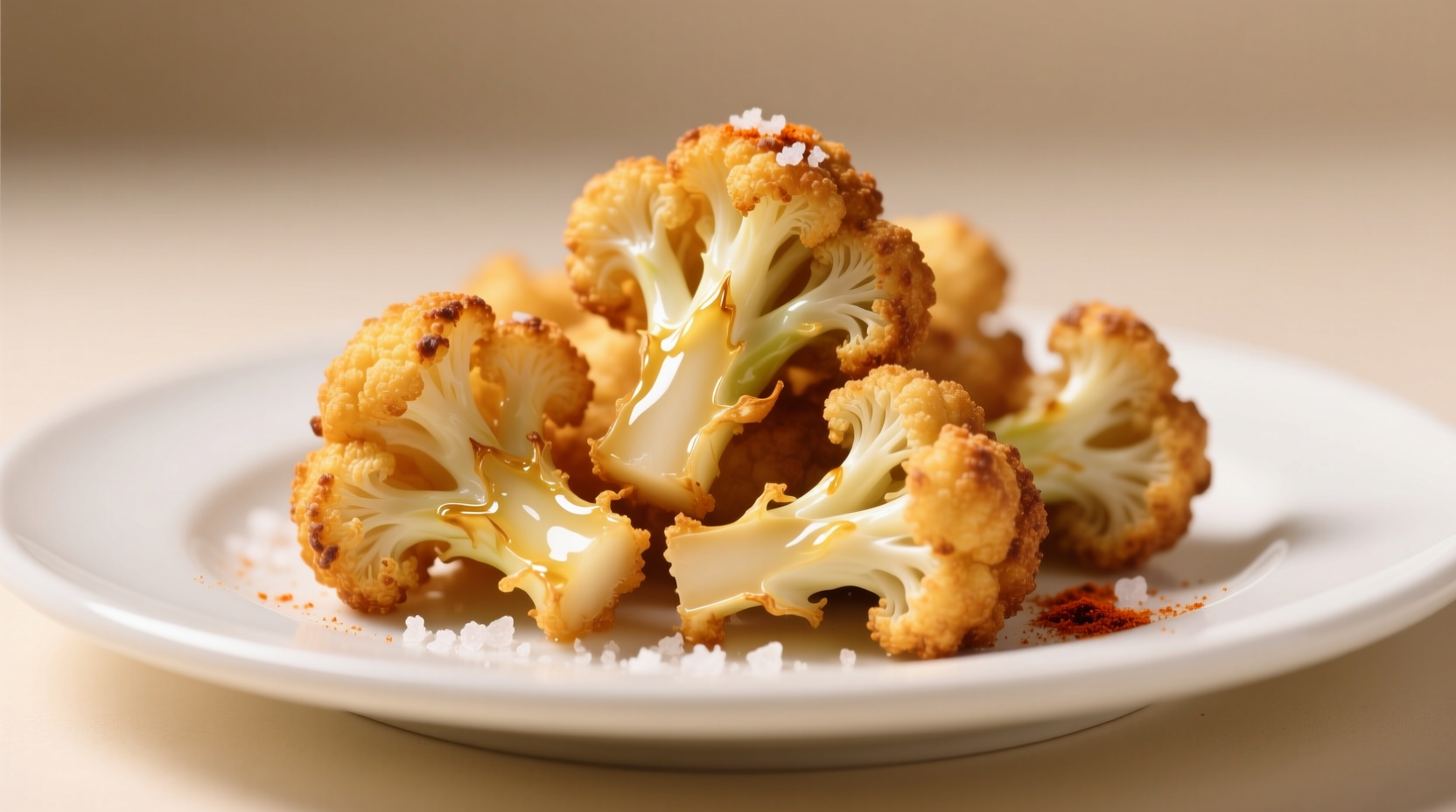When you're watching your calorie intake but craving something crispy and satisfying, fried cauliflower often appears as a "healthier" alternative to traditional fried foods. But how does it really stack up nutritionally? Let's examine the facts behind fried cauliflower calories with precise measurements you can trust.
What Determines Fried Cauliflower's Calorie Count?
The calorie content in fried cauliflower isn't fixed—it varies significantly based on preparation method. Understanding these variables helps you make informed choices whether you're meal prepping, following a specific diet, or simply curious about your favorite snack.
Cooking Method Matters Most
The way you prepare cauliflower dramatically impacts its final calorie profile. Oil absorption during frying contributes most of the additional calories beyond the vegetable's natural content.
| Cooking Method | Calories per 150g Serving | Oil Absorption Rate | Primary Fat Source |
|---|---|---|---|
| Raw cauliflower | 25 calories | N/A | Natural vegetable fats |
| Deep fried (standard batter) | 250-300 calories | 15-20% | Frying oil |
| Deep fried (light batter) | 200-250 calories | 10-15% | Frying oil |
| Air fried | 150-200 calories | 3-5% | Minimal added oil |
| Oven baked | 120-170 calories | 5-8% | Light oil coating |
Data sourced from the USDA FoodData Central database shows that raw cauliflower contains just 25 calories per 100g. The dramatic increase comes from oil absorption during cooking—deep frying typically results in 15-20% oil absorption by weight, while air frying reduces this to just 3-5%.

How Ingredients Change the Calorie Equation
Beyond cooking method, your ingredient choices significantly impact the final calorie count:
- Batter composition: Traditional beer batter adds approximately 50-75 extra calories per serving compared to a simple flour-egg coating
- Oil type: While calorie content is similar across oils, heart-healthy options like avocado oil (monounsaturated fats) offer better nutritional profile than palm oil (higher saturated fat)
- Seasonings: Dry rubs add minimal calories, while creamy sauces can add 100+ calories per serving
- Cauliflower preparation: Cutting into smaller florets increases surface area, leading to higher oil absorption and more calories
Portion Size Reality Check
Research from the USDA Agricultural Research Service shows that restaurant portions of fried cauliflower often contain 2-3 times the standard 150g serving used in nutritional databases. What's marketed as "a side" frequently delivers 400-600 calories—equivalent to a full meal.
Health Implications Beyond Calories
While calorie count matters, fried cauliflower offers nutritional benefits worth considering:
- Fiber content: Even fried, cauliflower retains most of its 2.5g fiber per serving, supporting digestive health
- Vitamin retention: Cooking actually increases bioavailability of certain antioxidants like carotenoids
- Protein pairing: When served with yogurt-based dips instead of ranch, you add protein without excessive saturated fat
A 2023 study published in the Journal of Food Science found that air-fried cauliflower maintained 85% of its original vitamin C content compared to 65% in deep-fried versions—demonstrating that cooking method affects more than just calories.
Smart Strategies for Lower-Calorie Fried Cauliflower
You don't have to sacrifice flavor to reduce calories. These evidence-based techniques deliver maximum crispiness with minimal extra calories:
- Use the water-dry technique: Soak florets in cold water for 10 minutes, then thoroughly dry before coating—reduces oil absorption by creating a moisture barrier
- Opt for aquafaba: This chickpea water substitute creates a light, crispy coating with just 3 calories per tablespoon versus 60+ in egg-based batters
- Temperature control: Maintain oil at 350-375°F (175-190°C)—lower temperatures increase oil absorption as food cooks longer
- Double-fry method: Brief initial fry followed by resting, then final crisp—reduces total oil absorption by 25% according to culinary research
How Fried Cauliflower Compares to Other Fried Foods
When evaluating whether fried cauliflower fits your dietary goals, comparison to common alternatives provides valuable context:
- Fried chicken wings: 350-450 calories per 150g serving (30-50% more than fried cauliflower)
- French fries: 365 calories per 150g serving (20-45% more than fried cauliflower)
- Onion rings: 320 calories per 150g serving (15-30% more than fried cauliflower)
- Zucchini fries: 220-270 calories per 150g serving (slightly less than cauliflower)
The CDC's National Nutrition Monitoring data shows that replacing traditional fried foods with vegetable-based alternatives like cauliflower can reduce daily calorie intake by 10-15% without sacrificing satisfaction.
Practical Application: Making Informed Choices
Understanding fried cauliflower calories isn't just about numbers—it's about making choices that align with your health goals:
- For weight management: Stick to 100g portions of air-fried cauliflower (100-130 calories) paired with protein-rich dips
- For balanced nutrition: Enjoy 150g deep-fried cauliflower occasionally as part of a meal with leafy greens and lean protein
- For maximum health benefits: Choose oven-baked versions with minimal oil and pair with fermented foods like kimchi for gut health
Remember that context matters—adding fried cauliflower to an already high-calorie meal creates different nutritional outcomes than incorporating it into a vegetable-forward diet. The key is mindful consumption based on accurate information rather than assumptions.











 浙公网安备
33010002000092号
浙公网安备
33010002000092号 浙B2-20120091-4
浙B2-20120091-4